Search
Did you mean: Solon?
Search Results
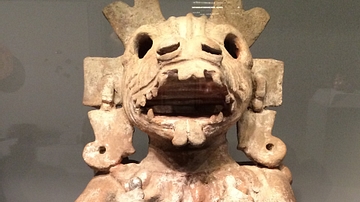
Image
Xolotl
A ceramic incense burner lid in the form of a skeletal canine figure, probably representing the Aztec night god Xolotl. When lit the burner would produce smoke through the mouth and eyes of the figure. Mexico, 1200-1400 CE. (St. Louis Art...
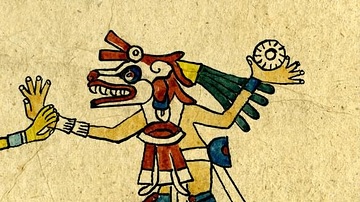
Image
Xolotl, Codex Fejérváry-Mayer
Drawing of the Aztec god Xolotl, playing ball. From a facsimile of the pre-Hispanic Codex Fejérváry-Mayer. Collection of the British Museum.
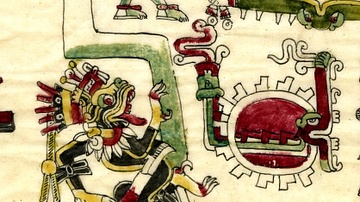
Image
Xolotl & Xiuhcoatl
Painting of the dog-headed Aztec god Xolotl with the fire serpent Xiuhcoatl. From the pre-Hispanic "Borgia Codex", 16th Century CE. Image taken from a facsimile in the collection of the British Museum.
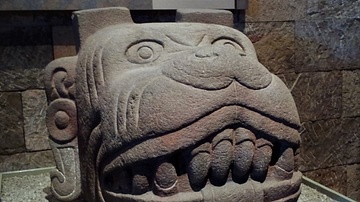
Image
Sculpture of Xolotl, Mexico City
Head of the Aztec god Xolotl. Collection of National Anthropological Museum, Mexico City.
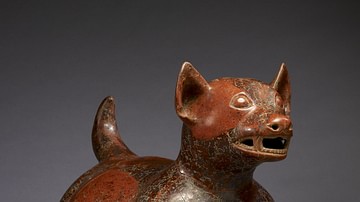
Article
Dogs and Their Collars in Ancient Mesoamerica
Dogs were an integral aspect of the lives of the people of Mesoamerica regardless of their location or culture and, throughout the region, were recognized as liminal beings belonging not only to the natural world and that of humans but to...

Definition
Texcoco
Texcoco (aka Tezcoco or Tetzcoco), located near the eastern shores of Lake Texcoco in the Valley of Mexico, was the capital of the Acolhua people. It was a major power in the Aztec period and a member of the Triple Alliance along with Tenochtitlan...
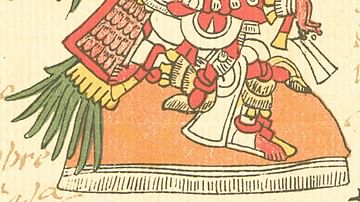
Definition
Tlahuizcalpantecuhtli
Tlahuizcalpantecuhtli, 'Dawn Lord,' was a Mesoamerican god who represented a menacing aspect of Venus, the morning star, and was one of the four gods which held up the sky. The people of the ancient Americas believed his rays could damage...

Definition
Ehecatl
Ehecatl was a Mesoamerican god of air and winds, especially those which brought rains. Regarded as a manifestation of the great feathered serpent god Quetzalcoatl, he was sometimes known as Quetzalcoatl-Ehecatl, in which guise he helped create...

Article
The Aztec Calendar
The Aztecs of ancient Mexico measured time with a sophisticated and interconnected triple calendar system which followed the movements of the celestial bodies and provided a comprehensive list of important religious festivals and sacred dates...

Article
Dogs in the Ancient World
Dogs have been a part of the history of human beings since before the written word. The ancient temple of Gobekli-Tepe in Turkey, dated to at least 12,000 years BCE, has provided archaeologists with evidence of domesticated dogs in the Middle...